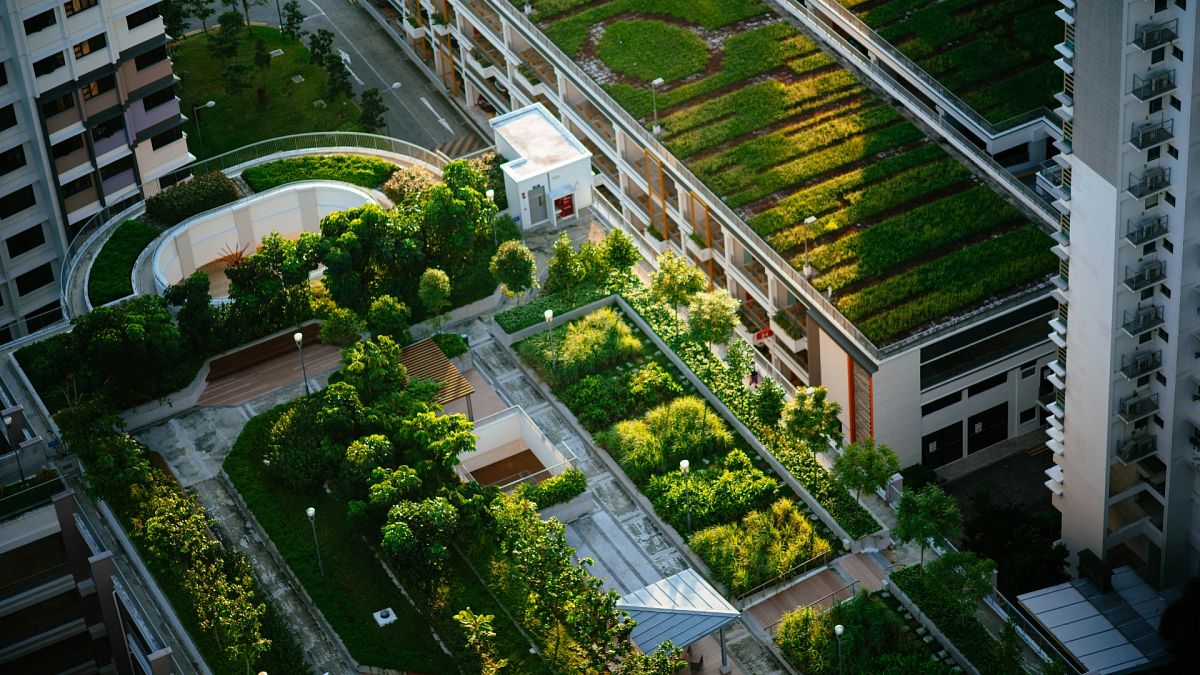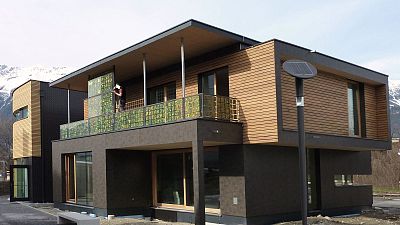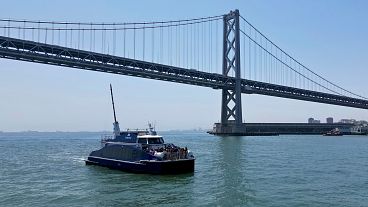Europe boasts three decades of research and product development that underpin its thriving green roof industry.
A 2023 study by the University of Technology, Sydney found green roofs when combined with solar panels, not only increased biodiversity and solar output by 107 per cent but also reduced temperatures by a significant 8°C.
Green roofs are experiencing a resurgence in interest since a new study published in January 2024 demonstrated that adding volcanic ash to them stabilises temperatures, keeps weeds away, is resilient to extreme weather, drains water efficiently, and is low maintenance.
According to the latest market research, in 2023, the North American green roof sector grew by more than 45 per cent, with around 1215 green roof projects.
Chicago, which already has more green roofs than any other city in the United States, installed around 56,000 square metres of green roofs last year and plans 600 projects to increase its total to around 650,000 square metres.
The concept of green roofs is not new. It dates back to ancient Rome and Mesopotamia.
Now researchers are finding ways to make this ancient concept even more sustainable and affordable.
Europe leads the world in green roofs
Europe boasts three decades of research and product development that underpin its thriving green roof industry. Germany, Switzerland, and Scandinavia conducted most of this pioneering research.
According to the German Association of Building Greening (BuGG), Germany amassed approximately 3.1 million square kilometres of green roof area by the 2020s, falling short only 8 per cent of the country's total roofed area.
Several cities, including Stuttgart and Copenhagen, began mandating green roofs for most new construction projects. However, in 2015, France became the first country to pass a nationwide law requiring the roofs of new buildings in commercial zones to have plants or solar panels.
North America's green roof research began later than in Europe. American Rivers highlights the significant potential of such initiatives. They estimate that a $10 billion (€9.2 billion) investment in green roofs could produce 190,000 jobs and cover 4.5 billion square metres of rooftop space, representing just one percent of the total roof area in US communities with populations over 50,000.
Chris Lawson, MD, senior designer at CK Architectural, says that despite rising carbon neutrality awareness and environmental concern, green roofs face additional barriers - investment, costs, and conviction.
Several regions incentivise building owners and developers to install green roofs. For example, Oregon's Ecoroof Project offers up to a 35 per cent discount on total storm water fees.
The city of Philadelphia offers a tax credit covering 50 per cent of green roof costs up to $100,000 (€91,900).
One industry has enthusiastically embraced green roofs
Lawson highlighted green roofs' many advantages. Still, the drive is fundamentally for people who value being environmentally friendly, as the work otherwise is just too much for some to consider the addition.
However, the ecotourism industry could implement positive changes. Owners, operators, and enjoyers of eco-friendly accommodations are often passionate about environmentalism and conservation.
Eco-lodges in Costa Rica are pioneers of sustainable tourism. Claudia Silva, general manager of Origins Lodge, a luxury eco-lodge in Upala, North Costa Rica, shares that nature is their first client. Therefore, the core concept was reconnecting with Mother Earth, where life began.
Green roofs were integral to the resort's original design, which blended seamlessly with pre-Columbian influences and traditions.
In the Scottish Highlands, Eagle Brae owner Mike Spencer-Nairn expresses the same sentiment.
"We wanted our log cabins to blend into the landscape. By creating green roofs, we've replaced the lost ground habitat. In the Scottish Highlands, where deer overgraze, these roofs have become safe zones for wildflowers, providing a valuable seed source for the surrounding area."
Onera lodge co-founder Ben Wolff preserves the beauty of the Wimberley hillside in Texas by integrating nature into his property with rooftops of native grasses and wildflowers. Wolff reports direct benefits like reduced air conditioning load and increased energy efficiency.
These green roofs also mitigate the impact of flash flooding and allow for the reuse of shower water for irrigation, making them virtually maintenance-free.
Others feel that green roofs are not low-maintenance. Jim Dominic, general manager at Blackberry Mountain, says that frequent weeding and regular watering are necessary despite choosing the best grass species for the Tennessee climate.
"However, green roofs are still a worthwhile investment and beloved by our guests," he adds. He is not the only one to receive praise.
Green roofs also have an aesthetic appeal
Circe Sher, co-founder of Piazza Hospitality, shares that guests at h2hotel in Healdsburg constantly ask to see the living roof and its flowers, birds, and bees. 75 per cent of the roof space is green, mimicking the surrounding hills.
While the hotel enjoys multiple green roof benefits, they regret not creating outdoor access. Because of this, Rooftop's terrace overlooks the green roof.
Large eco-resorts also recognise the benefits of green roofs. At NH Collection Copenhagen, 3,000 square meters of sedum plants cover most of the roof area. These plants provide aesthetic appeal, changing colours from green to yellow and pale pink, while they absorb 50-70 per cent of rainfall.
David Goldberg FAIA, President of Mithun, the design firm behind Stensgar Pavilion at Coeur d'Alene Casino Resort Hotel, Worley, Idaho, recalls the goal of seamlessly blending the new event space into the Palouse's rolling hills.
"Tribal leadership want to showcase the environmental benefits of the living roof, such as reducing heating and cooling loads, creating habitat, and managing storm water. This project paved the way for the larger resort expansion, which achieved USGBC LEED Gold certification and became one of the top sustainable resort projects in the country."
As green roofs continue to evolve, their potential to transform urban landscapes becomes increasingly evident.
With proven benefits such as enhanced biodiversity, energy efficiency, and storm water management, the future of green roofs looks promising.
Will more cities and industries embrace these sustainable solutions? The next decade will determine whether they will be more widely adopted.















